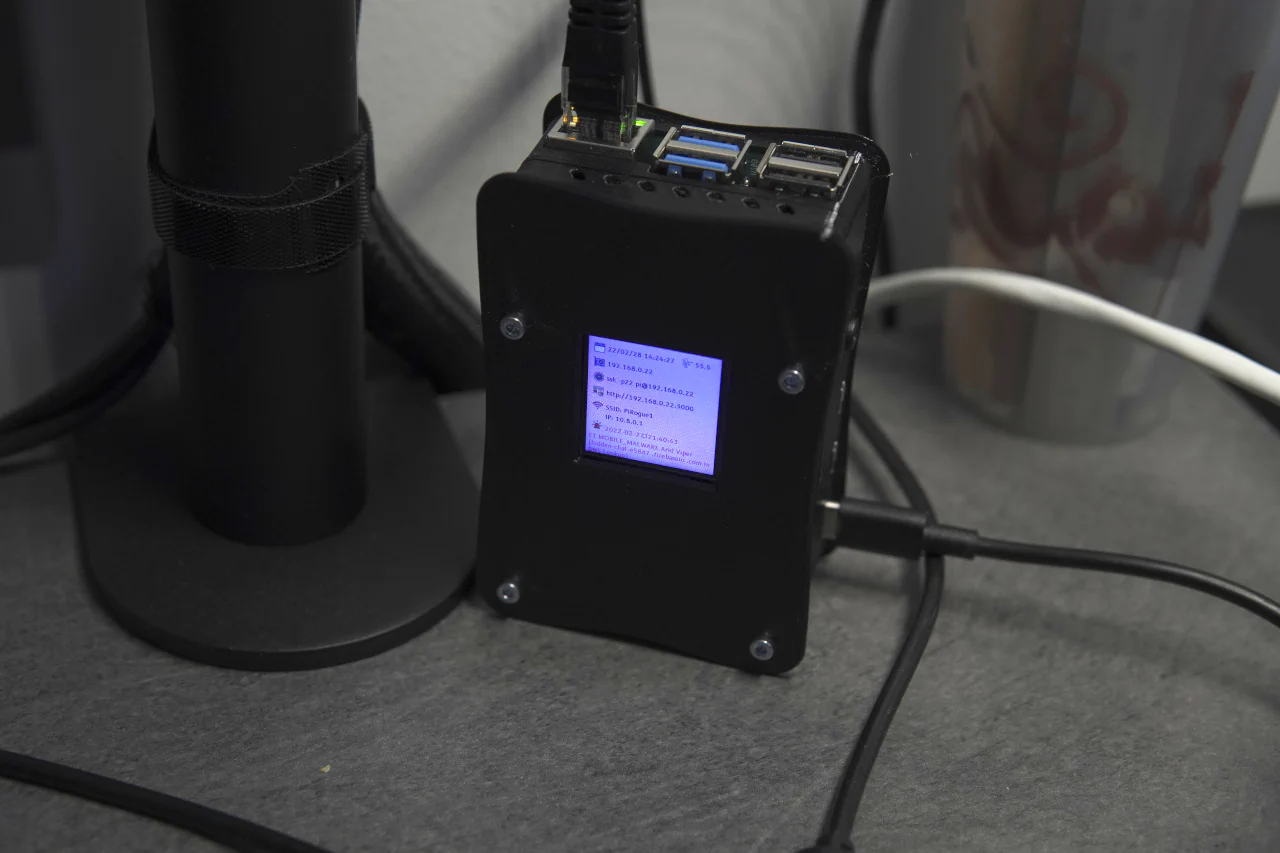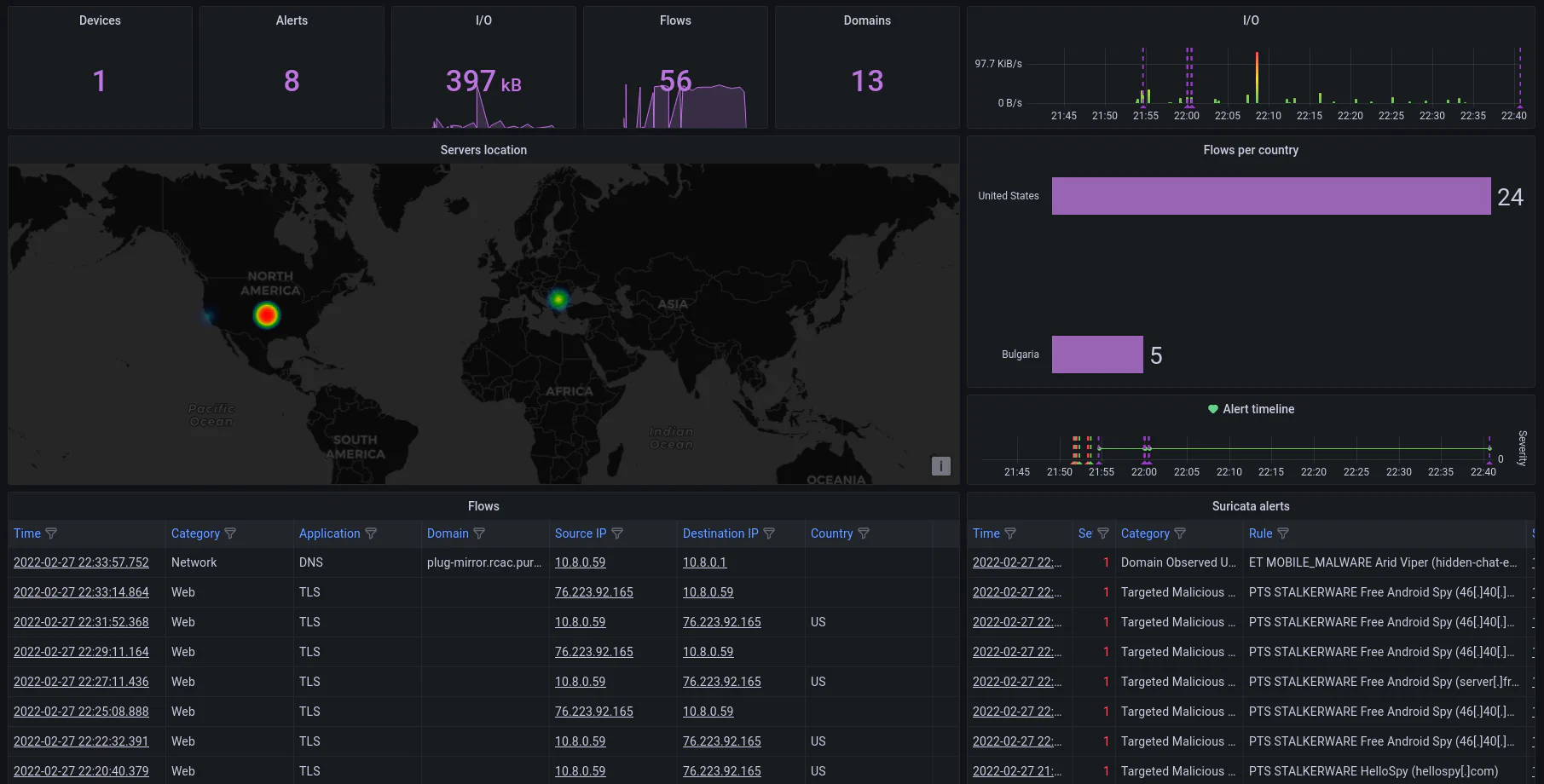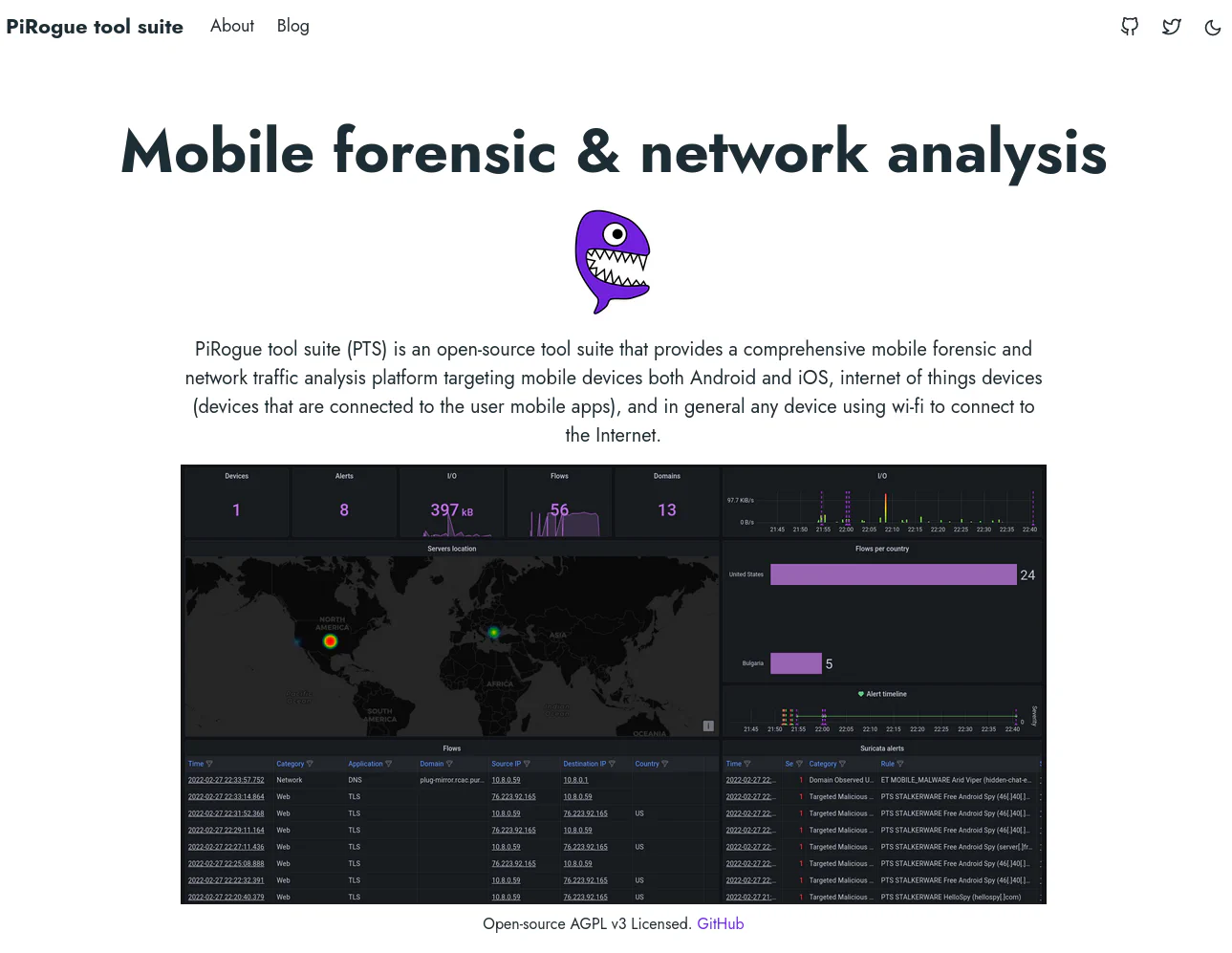 Mobile device forensics & digital investigationMonthly report n⁰1 - 2022-02https://pts-project.org/blog/monthly-report-n1-2022-02/Context of the projectPiRogue Tool Suite is a reboot of PiRanhaLysis project. Today, PiRanhaLysis is used by a lot of people ranging from universities (the University of Yale as an example), activists, NGOs and gets a lot of traction. Too much traction in fact to be maintained in our spare time as we have done until now. Currently, the project is at the proof-of-concept stage. To get to wider adoption by the general public, we need to streamline the build process and smooth the interface. Our goal is to make the project accessible to anyone. Here is the beginning of the reboot. The projectThe problem: the lack of open-source means (hardware + software) to assess both privacy and security of mobile devices. Depending on HRD goals, they should want to educate, conduct emergency assessment or off-the-field investigations. The plan: As with all the other projects we do, we are the first users of the technologies we develop and we aim to provide open-source, low-cost, well maintained, easy to use and easy to build hardware and software. We have three functioning modes for PTS:
The PiRogue is an open hardware device based on a Raspberry Pi operating as a network router (like any ISP router) analyzing network traffic in real time. What we have done so farYou can check out our work on GitHub at https://github.com/PiRogueToolSuite/ or on our website at https://piroguetoolsuite.github.io/. HardwareFor the moment we have a first version of the PiRogue device with 3D printable case and low cost Raspberry Pi hat. We have sourced enough electronic parts to manufacture 10 PiRogue hats. Design and manufacturing documents are not published yet.
Due to the chip crisis, Raspberry Pi are mostly out of stock. Case designA 3D printable case has been designed for both Raspberry Pi 3 B+ and Raspberry Pi 4. NB: Raspberry Pi foundation has discontinued the production of the 3 B+ version. Electronic designA Raspberry Pi hat has been designed. The hat ensures the following functions:
ManufacturingWe bought another hot air soldering station and milled an aluminum fixture plate in order to improve the manufacturing process of the PiRogue hats. A poorly edited video showing the milling process is available on Youtube at https://youtu.be/tSgLxqu3reU. SoftwareFor the moment, we only focused on the software running directly on the PiRogue.
PiRogue OSPiRogue OS is the operating system designed for the PiRogue, it is based on Raspberry Pi OS. The version 1.0.0 beta.7 has been released. The OS image can be downloaded directly from GitHub, unzipped and flashed on a SD-card. Debian packagesIn order to update the PiRogue software without having to flash a new image (and losing all your data), we have packaged different parts of the PiRogue software for Debian. Those Debian packages are delivered to the PiRogue via a PPA hosted on GitHub. Network analysisIn its current version, the PiRogue creates a wi-fi access point allowing the user to connect their mobile to it. Once connected, the PiRogue intercept and analyze the network traffic in real time. Traffic inspection is ensured by NFStream and Suricata. All the different information extracted from the network traffic is stored in InfluxDB. Suricata is configured to use Proofpoint Emerging Threat rules and PTS rules. The rules are automatically updated on a daily basis. The PiRogue stores 5 days of analysis history. Stalkerware detection rulesWe have released the first version of a Suricata rule-set focusing on the stalkerware. Those rules are based on the IOC list maintained by Echap. DashboardThe PiRogue provides a Grafana dashboard displaying data stored in the local InfluxDB database. The dashboard shows:
and allows you to pivot on IP addresses and alerts. Users can also create their own dashboard. Communication
Graphical designWe started working with _lila* on the project’s logo and graphical design. WebsiteThe project’s website is now online. It based on Hugo and is directly hosted on GitHub. DemosSince our work is driven by HRDs and NGOs, we started to organize demo session in order to present them the project and get their feedback. A first demo session has been done with some people working at OTF. OutreachThis project is community driven, to build a community around it, we started working with Misfit on communication strategy. We also started working on a video presenting the project. What we plan to do next month
ChallengesPiRogue relies on NFStream and because we are bad at cross-compilation, NFStream is compiled during the PiRogue OS build. It is a quick and dirty way to get NFStream working on ARM. We will ask around us if someone could help us in packaging NFStream for People we want to thank
|


